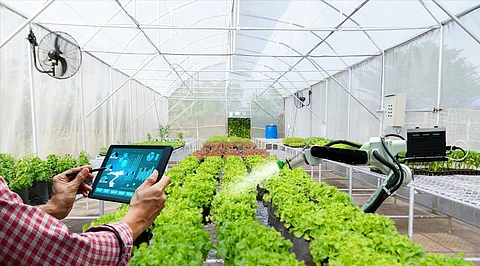

Edge computing in the era of digital transformation is slowly gaining momentum across many industries. It is expected to reach around 75% by 2025. Edge computing is adopted by many industries including the agricultural industry. This technology is helping to build the future of agriculture with smart farming. Though cloud infrastructure has already played an important role in developing the agricultural sector, edge computing wins the race in terms of speed and efficiency.
The opportunity lies within precision agriculture when edge computing is applied to smart farming technologies. While using edge computing technology farmers depend on data to obtain improved control over the industry and optimize the efficiency of their operations which results in reduced operational expenses.
Agriculture is one of the world's critical industries and has traditionally been slower to advance and adopt modern technologies than other industries. But now changes are taking place as digitization is becoming more attainable. The agricultural sector is realizing the benefits of advanced technologies like AI, process automation, edge computing, IoT, etc.
Edge computing is one of the evolving technologies that have the potential to bring transformation in the agricultural sector. Digitization can help in overcoming some of the biggest challenges in agriculture by using sensors, real-time data-driven insights, and actuators.
There are numerous use case examples for smart farming and agriculture starting from keeping track of climate changes and regulating the crop or cattle conditions to greenhouse automation and even farm management solutions.
So, here are some of the opportunities that can be brought in by edge computing:
Autonomous tractors and robotic machinery can run automatically without the intervention of humans, and this can be done with the help of edge computing. The tractors can communicate with nearby sensors to acquire necessary data about the surrounding environment.
Ag robots can evaluate the most efficient ways to cover the required area taking into consideration the type of task performed, number of vehicles existing in the field, size of apparatus, etc. Edge computing will enable the ag robots to use computer vision and pre-loaded field data and to interpret the insights from that data. Additionally, the automated tractors can reroute automatically if there is any obstacle like if there is any animal or human in the way. Such smart implements can execute a broad range of tasks, like watering, weeding specific field areas when needed, or even autonomously harvesting crops.
Similar to ag robots, a greenhouse or even a whole farm can be put on autopilot using IoT edge computing. This indicates that the whole ecosystem can perform the tasks itself without depending on a remote server to process the accumulated data and make decisions about day-to-day processes like feeding the cattle, watering the plants, controlling the temperature, humidity, light, etc.
Edge computing will enable the farm or greenhouse to work without depending on the connection to the main server and make decisions based on data from local sensors. This can result in improved process reliability and reduced waste, making agriculture a more sustainable process.
Agriculture IoT systems can make sophisticated decisions about possible environmental hazards or natural disasters with the help of edge computing. Remote sensors can accumulate and examine data regarding the changes in the weather or the environment to forecast possible disasters. If there are definite indications of danger, they can instantly process the information to the general control center. Farmers thus will be able to take real-time appropriate measures to shield their crops.
It is expected that the dependence on edge computing by enterprise-owned IoT devices will reach 6.5 billion in the coming year. Agriculture now has all the opportunities to lead the innovation in this field including manufacturing, transportation, energy, retail, and healthcare. This indicates that we can predict more edge computing use cases in agriculture soon.
Join our WhatsApp Channel to get the latest news, exclusives and videos on WhatsApp
_____________
Disclaimer: Analytics Insight does not provide financial advice or guidance. Also note that the cryptocurrencies mentioned/listed on the website could potentially be scams, i.e. designed to induce you to invest financial resources that may be lost forever and not be recoverable once investments are made. You are responsible for conducting your own research (DYOR) before making any investments. Read more here.
